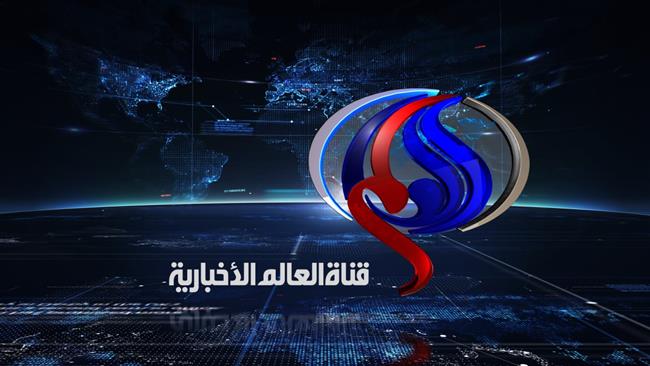
Al-Alam (The World) is IRIB’s 24-hour Arabic language news channel with news bureaus based in Baghdad, Beirut, Damascus and Tehran. The network advocates for and seeks to advance the interests of the Iranian regime to the world’s 300 million Arabs, and its satellite programming reaches viewers on five continents. Al-Alam offers a mouthpiece for Iran to influence Arab public opinion and shape perceptions of events on the ground in real time in accordance with the Iranian establishment’s perspective.
Al-Alam was set up hastily in 2003 during the run-up to the U.S.-led invasion of neighboring Iraq, preceding similar American media efforts by months and thereby giving Iran a head start in establishing its own spheres of influence in Iraq while simultaneously tarnishing both the U.S. occupation and Saddam Hussein’s ruling Ba’ath party. Up until the U.S. invasion, Saddam Hussein had a tight grip over Iraq’s media, banning satellite dishes and restricting access to content from Arab media outfits such as Al-Jazeera and Al-Arabiya. Al-Alam was able to break Saddam’s messaging stranglehold, utilizing a relay station on a hill on Iran’s border with Iraq to terrestrially beam sophisticated newscasts which enabled Iran to communicate directly to Iraqis.
Al-Alam quickly bolstered Iran’s image and influence in Iraq. As the war in Iraq raged, Al-Alam viscerally highlighted the toll taken on the civilian population, broadcasting images of dead civilians and maimed children in hospitals and featuring a nightly roundup of U.S. coalition attacks under the slogan “War of Domination.” Al-Alam’s slick and professional coverage won it a significant proportion of viewers, eroding support for the U.S. in the process and laying the groundwork for Iran’s emerging status as a crucial power broker in Iraq.
Bolstered by the initial successes of Al-Alam in Iraq, Iran expanded the network into a satellite channel, enabling it to reach Arab audiences throughout the Mideast and beyond. The network expanded its focus as well, as correspondents around the region began focusing on other Middle Eastern conflict zones, such as Lebanon and Israel/Palestine. Al-Alam served as a key soft power weapon in Iran’s bid for regional primacy, enabling it to exploit and exacerbate growing cleavages between Arab publics and their rulers, particularly in U.S.-allied Arab states. Especially after the 2006 Israel-Hezbollah war, Iran was able to boost its popularity and that of Hezbollah on the Arab street to unprecedented levels by claiming the leadership mantle of “resistance” against Israel and America’s regional ambitions. Al-Alam’s editorial content frequently attempted to walk a tightrope between portraying Iran in a positive light, on the one hand, while paying lip service to non-sectarian, pan-Islamic unity on the other.
The 2011 “Arab Spring” period, however, witnessed the collapse of Iran’s delicate balancing act, dealing a serious blow to Shi’a Iran’s aspirations to lead the Arab world. The advent of the Arab Spring and in particular, the civil war in Syria, brought the sectarian tensions that Iran had cavalierly stoked for years to the fore, transforming the region into a battlefield for influence between Iran and Saudi Arabia and its U.S.-backed moderate Arab allies, wary of Iran’s expanding regional clout. Whereas Iran’s media strategy in the mid-2000’s was oriented toward all Arabs, its support for the brutal Assad regime’s conduct has diminished Iran and Hezbollah’s standing among Sunni populations. Accordingly, its media strategy since 2011 has centered largely on fomenting unrest among neighboring Shi’a populations in order to weaken its Sunni rivals.
To a large extent, the cold war between Shi’a Iran and the moderate Sunni states takes place on a media battlefield, with Al-Alam serving as the tip of the spear in Iran’s efforts to propagandize and mobilize Shi’a populations in neighboring countries. As the Arab Spring’s unrest spread to Sunni-ruled Bahrain’s Shi’a majority and to Saudi Arabia’s sizeable Shi’a minority concentrated in the nation’s Eastern Province, both the Bahraini and Saudi monarchies directed their blame at Al-Alam. "Around-the-clock broadcasts in Arabic by Iran's state-run radio and television stations incited our population to engage in acts of violence, sabotage, and insurrection. … Iran's propaganda fuelled the flames of sectarian strife," claimed Bahraini King Hamad in November 2011. Al-Alam’s popularity has grown among Bahraini and Saudi Shi’as as a result of its coverage of their protest movements and the heavy-handed attempts by authorities to suppress them, which Saudi-owned Al-Arabiya and Qatari-owned Al-Jazeera both sought to downplay.